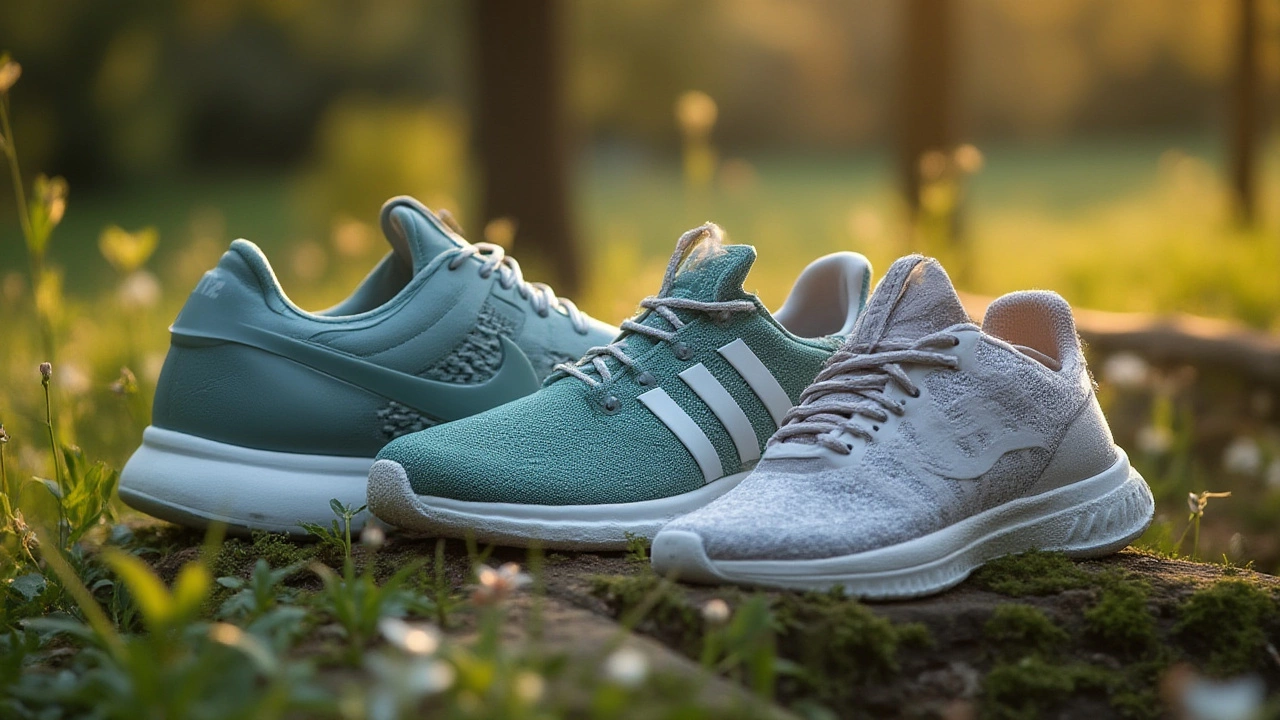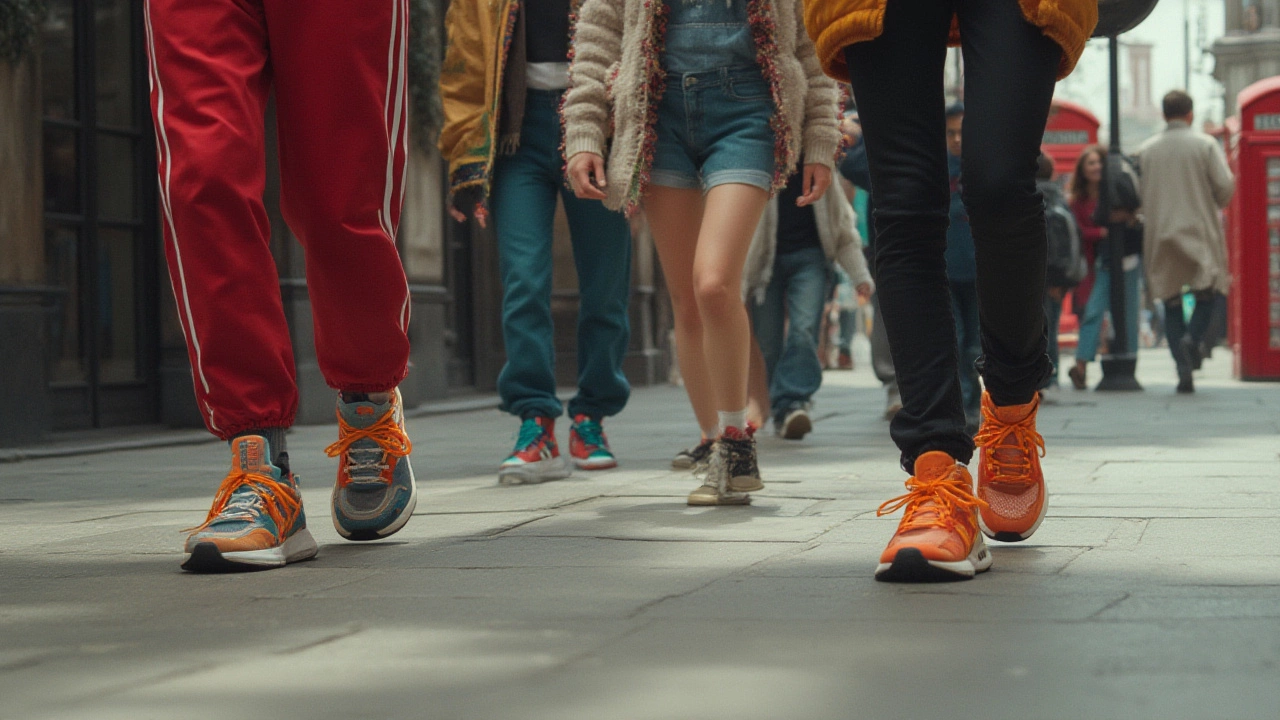If you ask a hundred people which shoe brand rules the world, get ready for a hundred stories about battered sneakers, impulse buys gone wrong, and shoes that stuck around way too long. Shoes are woven into day-to-day life—whether you’re power-walking through the city, logging endless steps for a fitness goal, or just slipping into something that makes you feel like a million bucks. But out of thousands of brands out there, only a few have really shaped culture, technology, and the way people shop for footwear today.
Nike: Where Innovation Meets Iconic Style
Let’s be real—Nike isn’t just a shoe brand, it’s almost a global mood. You see the Swoosh, and your brain goes straight to speed, legends, and a hundred unforgettable moments in sports and pop culture. Nike didn’t get here by luck. Since its humble beginnings in the early 1970s, when Phil Knight and Bill Bowerman sold shoes out of their car trunks, Nike’s been obsessed with pushing boundaries. The Air Jordan series alone turned basketball sneakers into cultural icons—Michael Jordan wore the original in 1985, and people still line up for new drops today. The top shoe brands rarely stay in fashion forever, but Nike’s managed to reinvent itself over and over.
It’s not just about athletes. Nike has made streetwear cool, partnered with artists, musicians, and designers, and fueled collabs that break the Internet—like the Nike x Off-White or Nike x Travis Scott launches. Nike’s tech isn’t just for show, either. Flyknit uppers, React cushioning, Zoom Air, and self-lacing Adapt tech: it sounds sci-fi, but you can buy it at the mall. Walk into almost any gym or high school and you’ll see Swooshes everywhere, from basketball courts to tracks to yoga studios. Nike’s inclusive sizing, focus on eco-friendly materials (check out their “Move to Zero” campaign), and custom options with Nike By You mean there’s something for pretty much everyone. Pro tip: if you want a pair that nobody else has, try customizing your own color combos online.
When it comes to numbers, Nike still reigns as the world’s largest athletic footwear brand, pulling in over $44 billion in revenue last year. But what’s really wild is how many pairs have evolved into collector’s pieces. Check sites like StockX or GOAT—the Air Dior collab sold for over $10,000 a pop. For everyday buyers, models like the Air Force 1, Air Max 270, and Pegasus keep getting updated, always landing on top lists of most comfortable and versatile sneakers. Nike’s marketing isn’t shy—they aim to inspire, spark change, and sometimes stir up a little controversy, like their famous Colin Kaepernick campaign. But love it or hate it, there’s no denying Nike’s impact on modern style.

Adidas: Performance Powerhouse Turned Lifestyle Must-Have
Flip over to Adidas if you want that European-cool meets tech-obsessed performance. Adidas started in Germany way back in 1949, with Adi Dassler hoping to make athletes “better, faster, and stronger.” For decades, they lived and breathed sport—think retro soccer boots, marathon-breaking running spikes, and tennis shoes as precise as German engineering. But Adidas really started making waves outside stadiums when hip-hop and skate culture adopted the brand. Run-D.M.C. rapped about their Superstars in the ‘80s, and suddenly shell-toes became status symbols overnight.
Fast-forward to now, and Adidas is the king of mixing old-school classics with futuristic design. The Stan Smith and Superstar still pop up everywhere—from red carpets to coffee lines. Meanwhile, innovations like Boost midsole foam actually changed what people expect from sneaker comfort and energy return. Collaborations with Kanye West (hello, Yeezy), Pharrell, and Prada have taken the brand deep into luxury territory, often selling out in seconds. Their sustainability push isn’t just for marketing—they’ve recycled over 50 million plastic bottles into Primeblue shoes and aim to make 9 out of 10 pairs with sustainable materials by 2025.
What makes Adidas grab loyal fans in 2025? It’s the versatility. Whether you’re hunting for running shoes that’ll survive marathon training (Ultraboosts still crush), slides for lazy days, or minimalist trainers for daily wear, Adidas makes it feel effortless. Their three-stripe logo is recognized in more than 190 countries, and they shape everything from soccer tournaments to summer festivals. Hot tip: Adidas outlet stores are goldmines for surprising deals, and releases like the Adidas Samba are having a massive second wind thanks to TikTok and underground fashion scenes. So if you want heritage, next-gen tech, and a sneaker that fits every outfit you own, Adidas rarely disappoints.

Converse: Canvas Classics for the Counterculture (And Everyone Else)
If you’ve ever scribbled lyrics on your shoes, mismatched laces, or kicked up your feet at a gig, chances are you owned a pair of Converse Chuck Taylors. Converse is proof that not all iconic shoes need high-tech features or wild prices. Born in 1908 and famous for the All Star basketball shoe introduced in 1917—yes, literally before sliced bread—Converse is simplicity done right. Chuck Taylor himself was a semi-pro basketball player who helped redesign and promote the sneaker; his hand-written signature on the patch has shown up everywhere for the last century.
The magic of Converse is the blank canvas effect—yes, they come in a million colors and limited editions, but nothing beats a pair of stained, broken-in Chucks that have seen a few adventures. Rock stars, artists, skaters, and even politicians have laced up a pair. Kurt Cobain, Elvis Presley, and Kristen Stewart? All fans. You’re as likely to see them paired with prom dresses as you are ripped jeans on the subway. Want to keep your Chucks cleaner for longer? Try spot cleaning with mild soap and a toothbrush; toss them in a pillowcase before gentle machine washing if things get dire.
Unlike brands that chase every new tech trend, Converse holds its ground. Their shoes are timeless and affordable—usually under $70 for the basic model—and the brand’s forays into sustainability have made them even more popular. In recent years, Converse launched the “Renew” line using recycled canvas, and even made limited runs using upcycled denim and post-consumer plastic. The Run Star Hike and Chuck 70 lines have pulled in a younger, sneaker-hungry crowd, giving the brand fresh energy while never losing the rebel spirit. If you need shoes that work for class, gigs, brunch, or just chilling on your front steps, it’s hard to beat the humble Converse experience.
So next time you’re standing in the aisle overwhelmed by choices, remember: Nike, Adidas, and Converse aren’t just big names—they’re brands that shaped what shoes mean today. From high-tech running marathons to low-key jamming in a garage, the right pair makes all the difference. Your feet—and your style—deserve the good stuff.

